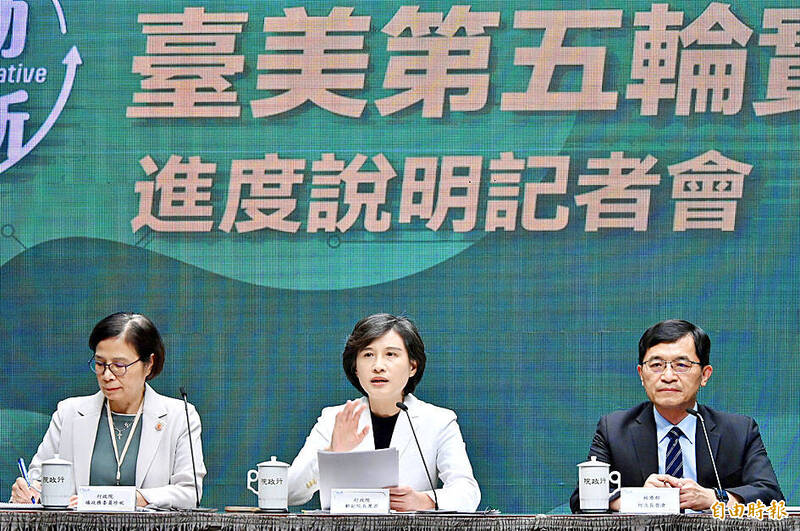Science
Taiwan Explores High-Tech Partnership with the US to Boost Investment

Taiwan is actively pursuing a high-tech strategic partnership with the United States, aiming to increase Taiwanese investment in the US. Vice Premier Cheng Li-chiun announced this initiative during a press conference in Taipei, emphasizing ongoing discussions with Washington regarding trade and investment.
Taiwan, home to the Taiwan Semiconductor Manufacturing Co (TSMC), the world’s largest contract chipmaker, maintains a substantial trade surplus with the US. Currently, Taiwanese exports to the US are subject to a 20 percent tariff, which Taiwan is seeking to reduce. Cheng, who is leading the negotiations on tariff matters, expressed optimism that both sides could agree on expanding US investments through what she termed a “Taiwan model.” This approach focuses on enhancing US production capacity without relocating supply chains.
The proposed Taiwan model emphasizes “industrial investment planning” supported by government measures, including export credit guarantees and joint ventures for developing industrial clusters. Cheng highlighted this strategy during her briefing alongside Minister Without Portfolio Yang Jen-ni and Vice Minister of Economic Affairs Ho Chin-tsang.
“The current negotiation focus is that the United States expects us to expand investments and engage in supply chain cooperation,” Cheng stated. The model allows corporate stakeholders to select the industries in which they wish to invest, with the government facilitating these choices through an investment insurance scheme. This initiative aims to encourage companies to invest by providing financial support.
While acknowledging that the science parks in Taiwan may not be entirely replicable in other nations, Cheng indicated a willingness to share Taiwan’s expertise to help develop industrial clusters in the US. Such collaboration could mitigate investment risks and reduce corporate overhead costs. She clarified that this plan does not entail transferring Taiwan’s science parks to the US.
To facilitate the establishment of these industry clusters, Cheng urged the US to provide essential resources, including land, utilities, services, and basic infrastructure. She emphasized the need for streamlined visa processes and expedited legal frameworks to accelerate corporate investment plans and foster local supply chains.
Cheng reiterated that achieving these goals will require a concerted effort among the industrial sector, the financial sector, and government entities, creating a “win” for all parties involved.
In addition to discussions about supply chain collaboration, Taiwan is negotiating tariff rates with the US. Cheng reaffirmed Taiwan’s position that these rates would not be cumulative. Ongoing discussions also include preferential tariff rates for semiconductors and related products, particularly those mentioned under Section 232 of the US Trade Expansion Act of 1962.
Neither the US Department of Commerce nor the Office of the US Trade Representative has commented on the negotiations thus far. TSMC, which is witnessing increased demand due to artificial intelligence applications, is investing US$165 billion to construct chip factories in Arizona, though most of its manufacturing will continue to be based in Taiwan. Cheng clarified that a proposal mentioned in US media by US Secretary of Commerce Howard Lutnick for a “50-50 split” in chip production was not discussed and does not align with Taiwan’s objectives.
Taiwan’s overarching goal is to maintain its industrial base while expanding globally and fostering bilateral strategic cooperation. In the ongoing negotiations, Taiwan is pushing for three main concessions: a reduction in the tariff rate, comprehensive preferential treatment for semiconductors and related items, and improved investment opportunities in the US.
The US tariff policy, which took effect on August 7, 2023, set Taiwan’s provisional tariff rate at 20 percent. This year has seen five rounds of negotiations, beginning with a video conference on April 11, followed by meetings on May 1, June 25, July 8, and late July to early August, with the most recent talks concluding on Monday.
-

 Lifestyle4 months ago
Lifestyle4 months agoHumanism Camp Engages 250 Youths in Summer Fest 2025
-

 Business5 months ago
Business5 months agoKenvue Dismisses CEO Thibaut Mongon as Strategic Review Advances
-

 Sports4 months ago
Sports4 months agoDe Minaur Triumphs at Washington Open After Thrilling Comeback
-

 Sports5 months ago
Sports5 months agoTupou and Daugunu Join First Nations Squad for Lions Clash
-

 Top Stories5 months ago
Top Stories5 months agoColombian Senator Miguel Uribe Shows Signs of Recovery After Attack
-

 World5 months ago
World5 months agoASEAN Gears Up for Historic Joint Meeting of Foreign and Economic Ministers
-

 Health4 months ago
Health4 months agoNew Study Challenges Assumptions About Aging and Inflammation
-

 Business5 months ago
Business5 months agoOil Prices Surge Following New EU Sanctions on Russia
-

 Entertainment4 months ago
Entertainment4 months agoDetaşe-Sabah Violin Ensemble Captivates at Gabala Music Festival
-

 Entertainment4 months ago
Entertainment4 months agoBaku Metro Extends Hours for Justin Timberlake Concert
-

 Top Stories5 months ago
Top Stories5 months agoRethinking Singapore’s F&B Regulations Amid Business Closures
-

 Business5 months ago
Business5 months agoU.S. House Approves Stablecoin Bill, Sends to Trump for Signature









